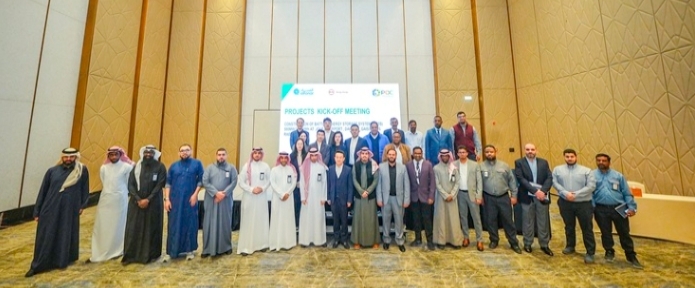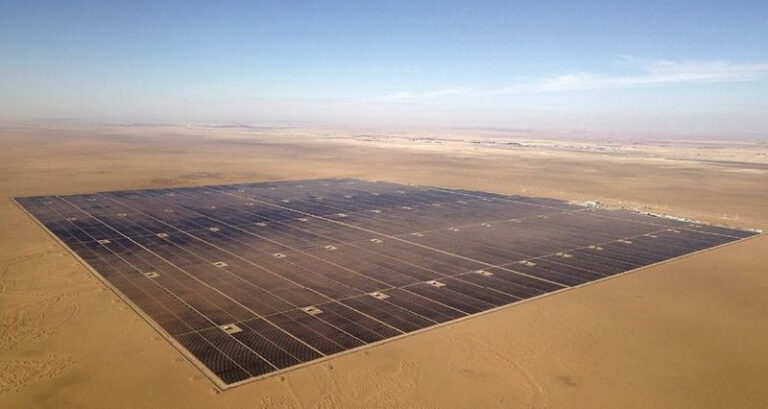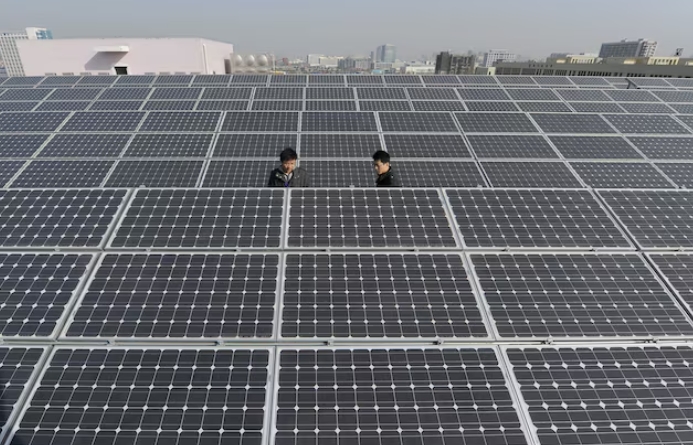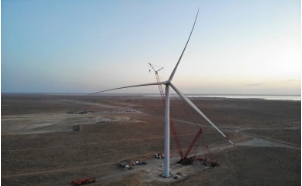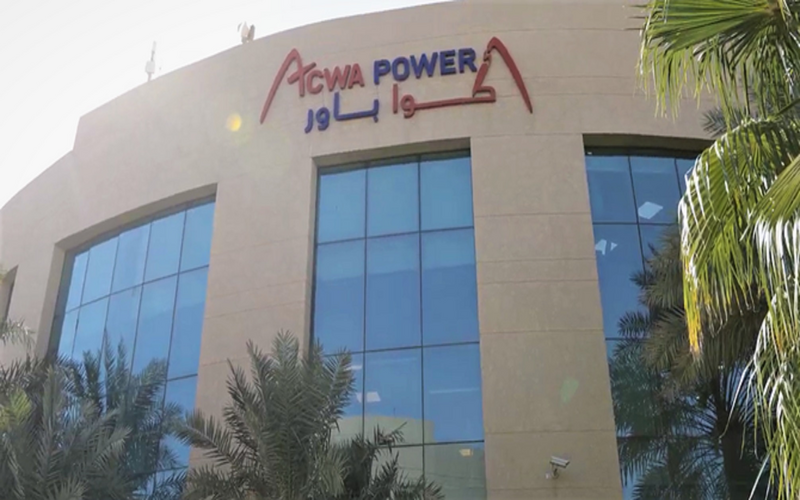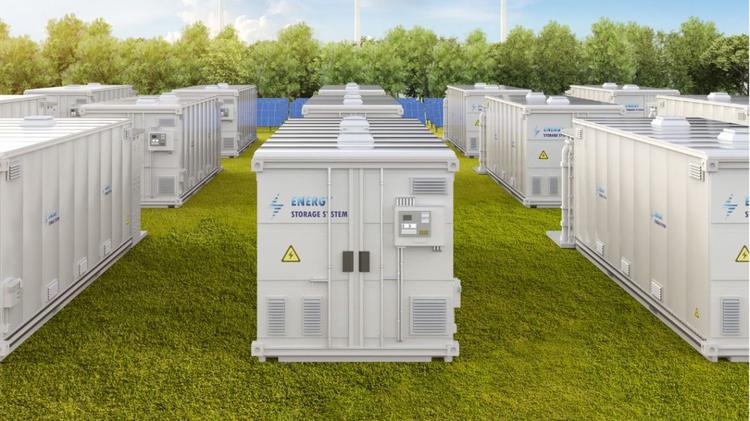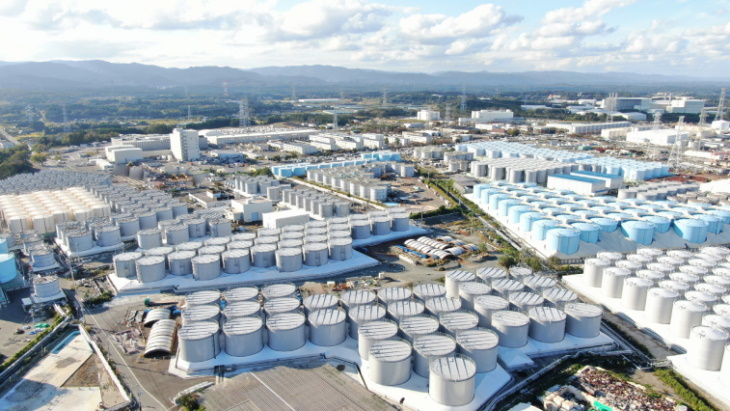
At the site, contaminated water - in part used to cool melted nuclear fuel - is treated by the Advanced Liquid Processing System (ALPS), which removes most of the radioactive contamination, with the exception of tritium. This treated water is currently stored in about 1000 tanks on site. The total tank storage capacity amounts to about 1.37 million cubic metres and all the tanks are expected to reach full capacity in late 2023 or early 2024.
Japan announced in April 2021 it plans to discharge treated water stored at the site into the sea over a period of about 30 years, and asked the IAEA to review its plans against IAEA safety standards. An IAEA Task Force was established to implement the assistance to Japan, which included advice from a group of internationally recognised experts from Member States, including members from the region, under the authority of the IAEA Secretariat.
IAEA Director General Rafael Mariano Grossi has now formally presented Japanese Prime Minister Fumio Kishida with the agency's comprehensive report on the planned water release.
"The report is the outcome of nearly two years of work by an IAEA Task Force made up of top specialists from within the Agency advised by internationally recognised nuclear safety experts from eleven countries," the IAEA said. "They reviewed Japan's plans against IAEA Safety Standards which serve as a global reference for protecting people and the environment and contribute to a harmonised high level of safety worldwide."
The IAEA's review addressed all key safety elements of the water discharge plan in three major components: assessment of protection and safety; regulatory activities and processes; and independent sampling, data corroboration, and analysis.
Over the past two years, the Task Force has conducted five review missions to Japan, published six technical reports, and met many times with the Japanese government and Tokyo Electric Power Company (Tepco), and analysed hundreds of pages of technical and regulatory documentation. Task Force members have also several times visited the Fukushima Daiichi site to review discharge preparations there.
"The purpose of this comprehensive report is to present the IAEA's final conclusions and findings of the technical review to assess whether the planned operation to discharge the ALPS treated water into the Pacific Ocean over the coming decades is consistent with relevant international safety standards," the IAEA said.
"Based on its comprehensive assessment, the IAEA has concluded that the approach to the discharge of ALPS treated water into the sea, and the associated activities by Tepco, the Nuclear Regulation Authority, and the government of Japan, are consistent with relevant international safety standards," the report says. "The IAEA recognises that the discharge of the ALPS treated water has raised societal, political and environmental concerns, associated with the radiological aspects. However, the IAEA has concluded, based on its comprehensive assessment, that the discharge of the ALPS treated water, as currently planned by TEPCO, will have a negligible radiological impact on people and the environment."
Grossi said the report "represents a significant milestone in the IAEA's review" but that "our task is only just beginning". He said the IAEA's safety review will continue during the discharge phase. The agency will also have a continuous on-site presence and provide live online monitoring on its website from the discharge facility.
"This comprehensive report makes the science of the treated water release clear for the international community and I believe answers the technical questions related to safety that have been raised," he added. "I hope that all who have an interest in this decision will welcome the IAEA's independent and transparent review, and I give an assurance, as I said right at the start of this process, that the IAEA will be there before, during and after the discharge of ALPS treated water."
Responding to the publication of the IAEA's report, Tepco said: "We will carefully examine the contents of this comprehensive report and reflect them in our efforts to ensure and improve the safety and quality of the discharge of the ALPS treated water. We will continue to make absolutely sure that we guarantee safety when discharging the ALPS treated water into the sea by subjecting our initiatives to IAEA reviews that compare them to IAEA international safety standards, while providing information about the result of the review and monitoring to parties both in Japan and overseas in a highly transparent manner so as to deepen the understanding of the international community."
Nearby countries have been alarmed by Japan's plan, but the IAEA says that the level of tritium in the water will be "well below national regulatory limits and the World Health Organization standards for drinking water".
"No matter what the report says, it will not change the fact that Japan will release millions of tonnes of Fukushima nuclear-contaminated water into the Pacific Ocean in the next three decades," said a spokesperson from China's Foreign Ministry. "We urge the Japanese side to work with the IAEA to put in place as soon as possible a long-term international monitoring mechanism that would involve stakeholders including Japan's neighbouring countries."
Japan intends to start discharging the ALPS-treated water in 2023, pending Tepco's completion of necessary domestic regulatory actions.
